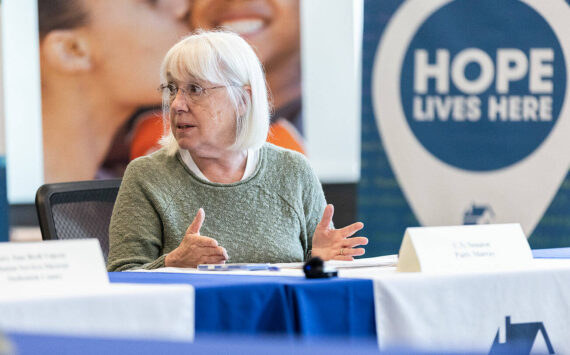By Morf Morford
Tacoma Daily Index
It’s the one event that comes twice a year – the time when we all change our clocks.
There was an urban legend, possibly true, that it took the average household a full hour to change all the clocks in a house.
But that was back in the days when people actually had – and used – multiple clocks.
In 2021, few of us do. Our digital timepieces change without our intervention.
At my home we have a clock on our kitchen range.
And then there is the dreaded car clock. I, like most people I know, usually don’t change that one. For far too many years I just left it and kept in mind that it would be an hour off for half of the year.
I, like many others, have wondered for years why we do this to ourselves.
When it was first established, in 1915, there may have been good reasons.
The Chamber of Commerce, an early proponent, argued that if workers had more daylight they would be much more likely to stop and do some shopping on their way home.
When Congress held hearings on extending DST in the mid-1980s, officials from the golf industry argued that an additional month of daylight saving was worth $200 million in additional sales of golf clubs and greens fees. The barbecue industry said it was worth $100 million.
In 2021, every state except Hawaii and Arizona currently observes daylight saving time. But each year, more states say it’s time to stop messing with our clocks and embrace daylight saving time year-round.
U.S. territories such as Puerto Rico, the U.S. Virgin Islands, American Samoa and Guam do not currently observe daylight saving.
In the last four years, 19 states have enacted legislation or passed resolutions to provide for year-round daylight saving time – if Congress were to allow such a change, according to the National Conference of State Legislatures.
Momentum and consensus seems to be building. Between 2015 and 2019, 29 states introduced legislation to abolish resetting the clocks, according to the Department of Transportation, which is in charge of time zones and daylight saving.
What we call “Standard time” is in effect for a diminishing portion of the year, with daylight saving time controlling the clock for 34 weeks — roughly eight months — in 2021.
That’s far from the original policy and law, which divided the year in half.
In other words, Daylight Saving Time, has become, for three fourths of the year, our “standard” time.
From 1987 to 2006, the country observed DST for about 7 months each year.
The first big shift came in 1986, when the start of daylight saving was shifted earlier, from the last Sunday in April to the first.
In 2005, Congress moved the start date one month earlier in the spring and pushed it one week later in the fall.
As of now, we shift our clocks forward the second Sunday in March and one hour back the first Sunday in November (November 7th this year).
One aspect of the original intent was to save energy.
To put it mildly, this is not true for most of us now.
Most of us use as much, or more, energy/electricity at home as we do at work.
And if we are off doing errands, we certainly consume more gas while we drive around than we might “save” if we had one more hour of daylight.
Time for a change
As with almost everything in 2020-21, DST is being questioned as never before.
Why we do it, and whether we should continue doing it is a set of questions more and more of us are asking.
I don’t know about anyone else, but that shift of a single hour completely messes up my sleep patterns, and for a long time puts meetings in jeopardy, as it was a near certainty that someone would not change their clocks and be either too late or too early for our meeting.
These time changes have even stronger impacts on children.
A 2020 study, published in the peer-reviewed journal Current Biology, determined the risk of fatal traffic accidents increased by 6% in the U.S. during the spring transition to daylight saving time.
Multiple studies have shown increased ER visits, increased motor vehicle crashes and work-related accidents following these shifts.
A 2019 report published in the Journal of Clinical Medicine analyzed seven studies on daylight saving time including more than 100,000 people and found a higher risk of heart attacks in the weeks following both the spring and fall transitions.
In a 2015 study published in Sleep Medicine, researchers in Finland found the overall rate of having a stroke was 8% higher during the first two days following the transition to daylight saving from 2004 to 2013.
People with cancer were 25% more likely to have a stroke after the switch compared to any other time of the year. Participants over the age of 65 were 20% more likely.
Time around the world
Our typical energy use and shopping habits have changed dramatically, especially in the past year or so.
And if you think this is confusing in the USA, Australia has multiple time zones. Some of them are half-hour and quarter-hour time zones. And not all states and territories use DST.
More than 60% of the countries around the world use standard time all year.
In the US and Canada the standard time period is only around 4.5 months.
Most European countries are on standard time 5 months of the year and spend 7 months on DST.
Canada does its best to keep in time (literally) with the nation south of its border.
So one more time, it’s the season to change our clocks. Or not.
*And, if you are not familiar with this classic song by Chicago, or if you want to hear it again, check out the official version here – https://www.youtube.com/watch?v=9FzCWLOHUes.





